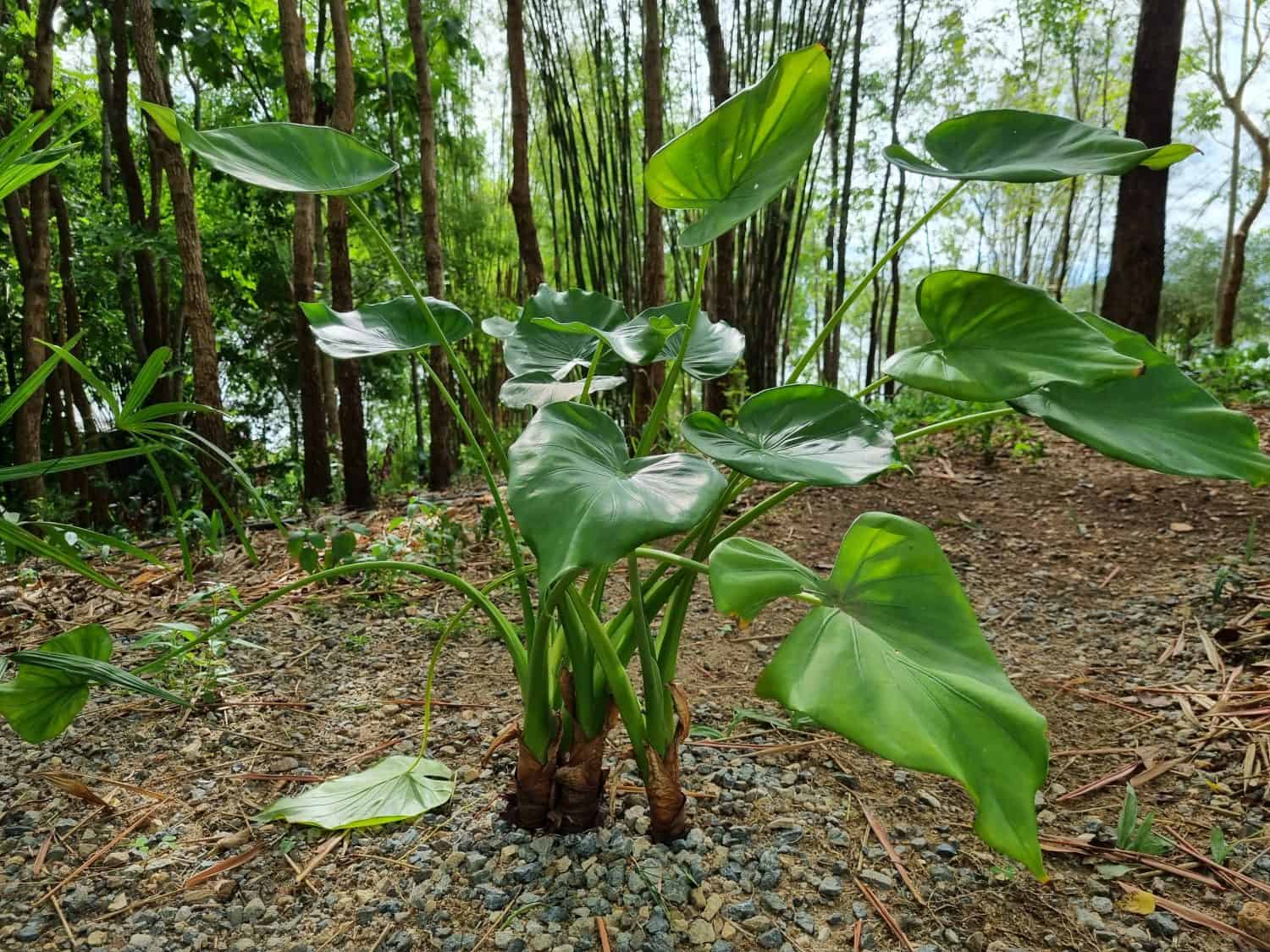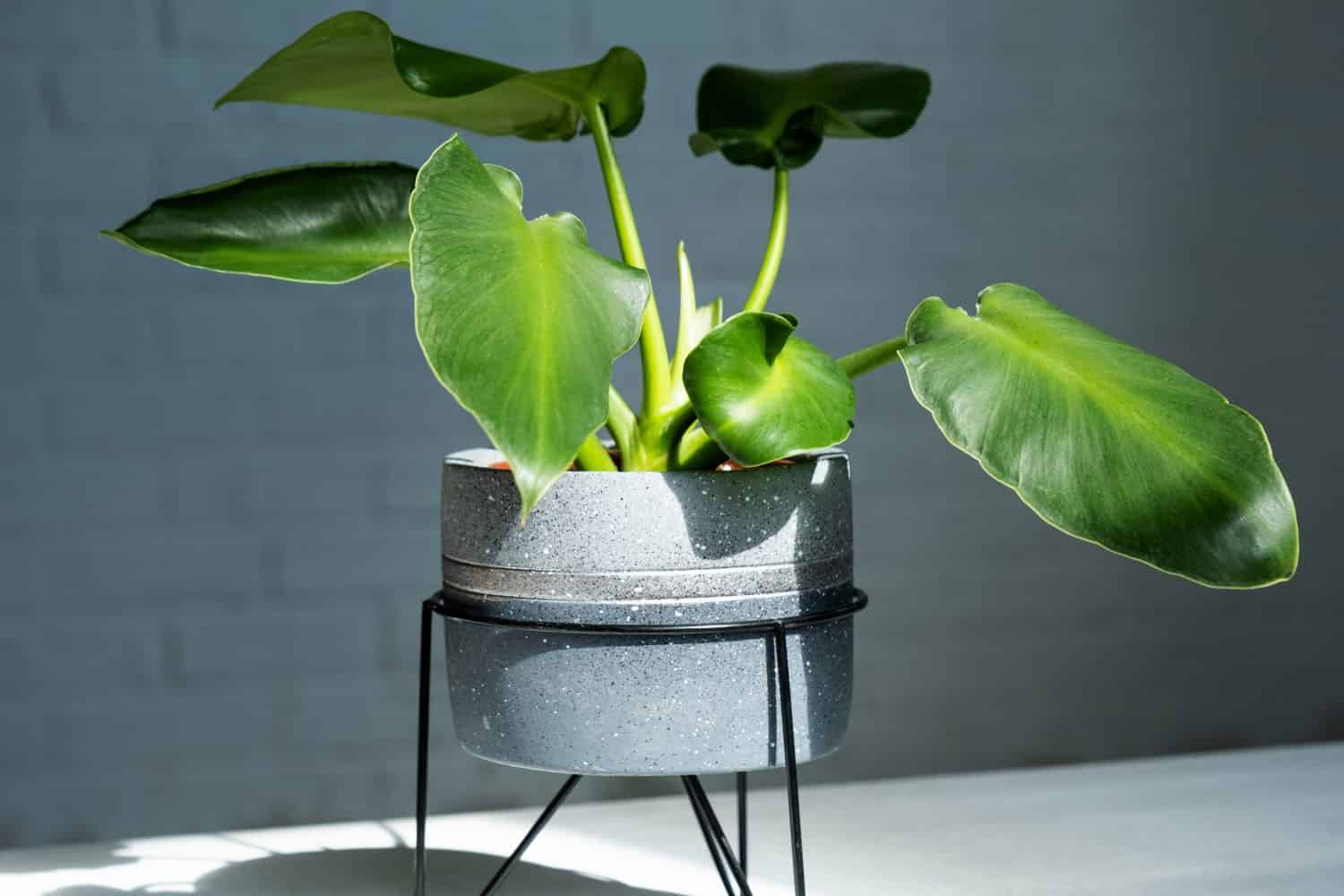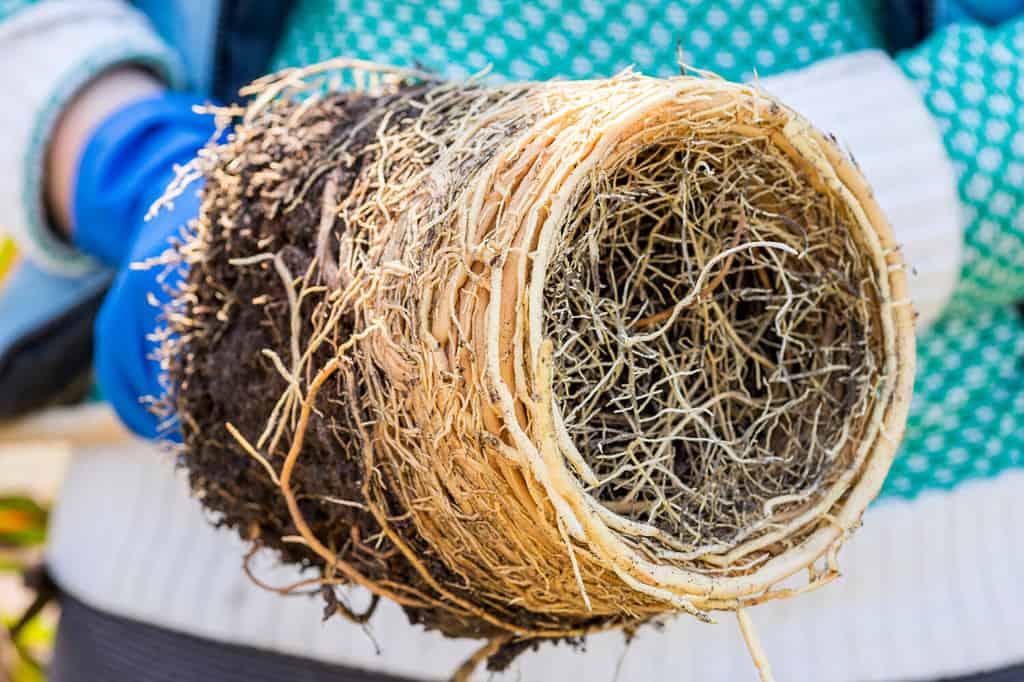Philodendrons are the ultimate beginner plant: they’re low-maintenance, eye-catching, and versatile. With so many species to choose from, there’s truly a philodendron for everyone.
Philodendron Rugosum is one of the less common options. In this article, we’ll cover Philodendron Rugosum care tips and advice for a healthy, thriving plant.
Let’s dig in!
What Are Philodendron Rugosum Plants?
Also known as pig’s ear plants or sow’s ear plants, the Philodendron Rugosum is a tropical plant that goes colloquially by its scientific name (officially, Philodendron rugosum).
This plant is rare and has been recently reclassified as Near Threatened. This status means the plant is dwindling in its natural environment but hasn’t quite reached Endangered status yet. Keep this in mind when purchasing Philodendron rugosum, and report any questionable sourcing to your local conservation office.

Philodendron Rugosum is native to Ecuador.
©yuiliz/Shutterstock.com
Appearance
This lovely tropical plant has waxy green leaves that grow from lively green stalks. Like many philodendron species, the leaves are heart-shaped.
In its native environment, this philodendron will grow over 10 feet tall. However, it’s unlikely to grow that high indoors.
Native Regions
Philodendron rugosum is endemic to Ecuador and lives primarily along the Andes mountains. Its main threat is habitat destruction through unsustainable land development and deforestation.
Uses
The pig’s ear plant is mainly used as an ornamental indoor plant. Philodendrons were also highlighted in NASA’s Clean Air Study and have been a part of recent studies on affordable air purification methods related to viral pandemics. More data is needed to verify the findings, but the Philodendron shows promising results.
Toxicity
Unfortunately, pet parents should sit this one out. Philodendrons are toxic to pets and humans, so keep that in mind if you have curious critters or kids.
Plant Parent Experience Level
Philodendrons are a beginner-friendly plant. Their low-maintenance nature makes them ideal for a new collector.
With these key features in mind, let’s get into the best Philodendron Rugosum care tips.
1. Soil Requirements
Philodendron Rugosum requires moist soil with enough drainage to move excess water away from the roots. Add some coco coir or perlite to regular potting soil to improve airflow and reduce the risk of root rot.
You can also get aroid-friendly soil for philodendrons and similar plants.

Philodendron Rugosum thrives with indirect sunlight, airy soil, and plenty of humidity.
©Simol1407/Shutterstock.com
2. Choosing the Right Pot
Drainage is key for a healthy Philodendron Rugosum. As long as the pot has drainage holes, this resilient plant will tolerate any vessel. Get creative with your interior decor!
3. Light Requirements
Philodendron Rugosum is used to dappled light in its tropical environment. While it needs ample sunlight to thrive, it performs best with indirect light. Place it in a corner near a sunny window or a counter where it gets plenty of light without the risk of scorching.
4. Watering Requirements
This tropical plant loves humidity and moisture. Aim to keep the soil moist, adding water when the top inch dries. Remove excess water from the tray to prevent root rot.
5. How and When to Fertilize
Feed your Philodendron Rugosum with organic matter at the beginning of the growing season and each month until dormancy. If you use fertilizer, dilute the formula with water. This plant is sensitive, and overfeeding could do more harm than good.
6. Common Pests to Watch for
This philodendron is susceptible to the usual indoor plant pests: spider mites, mealybugs, and scale insects. Wipe down your plant with a warm, damp cloth and dish soap to remove them. Treat with an anti-fungal treatment or neem oil if the problems persist.
7. Pruning Requirements
The pig’s ear plant doesn’t require pruning. However, you can trim back yellowing and browning leaves as needed. Be sure to determine the cause of these ailments first!
8. How and When to Propagate
The easiest way to propagate this philodendron is through division. However, some plant parents have success with leaf cuttings:
Propagate your Philodendron at the start of the growing season. Water your plant a few days before propagation to promote growth and healing.
- Use sterile cutting tools to trim an established stem of your Philodendron Rugosum. The cutting should have several nodes for optimal results.
- Let the cutting rest for a few days in a dry area. This rest period will let it develop a callous and promote better root growth.
- Place the stem of your cutting in moist potting soil and tuck the soil around it for stability. You may also dip in the rooting hormone to promote faster growth.
- Water regularly but gently until the roots develop. Keep your cutting in bright, indirect sunlight for optimal results.
Once the plant is established, follow the maintenance steps above.
9. When and How to Repot
Repot your philodendron once the roots start to poke through the drainage holes or the pot becomes crowded. You may also repot every 2-3 years to refresh the soil.
Remember to water your plant a few days before transplanting to help prepare it for the shock.

Don’t let your Philodendron Rugosum become rootbound.
©Andrii Spy_k/Shutterstock.com
10. How to Support Climbing
There’s a common misconception that the large leaves and upward stalks make this plant a non-climber. However, Philodendron Rugosum loves to climb!
Provide this beauty with a moss pole or trellis. It may benefit from staking as it continues to grow.
11. Proper Plant Placement
Place this plant in a warm area that doesn’t dip below 60°F (15°C). Place it away from vents and drafts to prevent shock.
This humidity-loving plant does well in a brightly lit bathroom. If you have a dry heat source or live in an arid location, use a humidifier or tray filled with pebbles and water to supplement with moisture.
12. Leaf Care and Cleanliness
Keep these waxy leaves shining with regular dusting. Removing debris helps prevent pests and promote photosynthesis so your philodendron will flourish and thrive!
13. Dormancy Preparation
Like many tropical plants, philodendrons go through dormancy periods in the fall and winter. Prepare your plant by scaling back the watering schedule and feeding as fall approaches. Avoid transplanting or propagating during this time.
The photo featured at the top of this post is © mammoote/Shutterstock.com
Thank you for reading! Have some feedback for us? Contact the AZ Animals editorial team.







